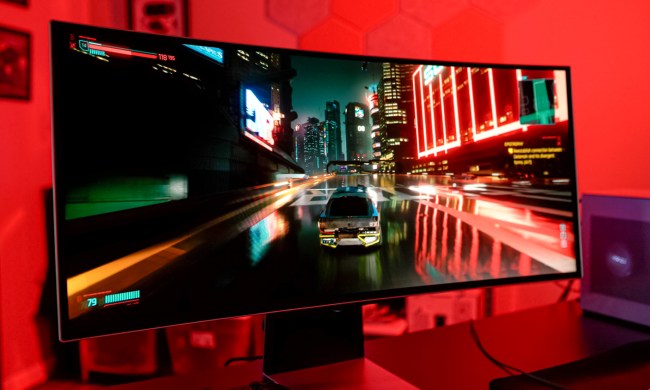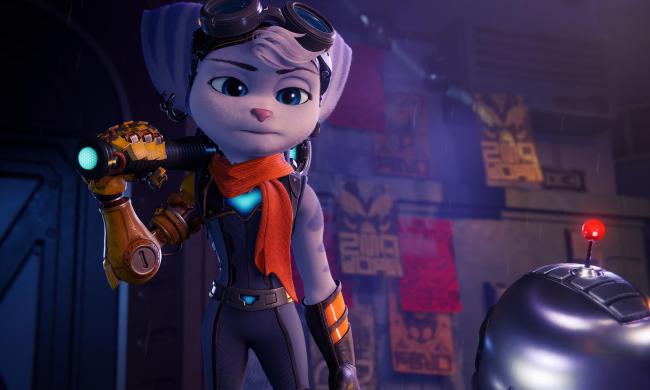AMD’s recently launched RX 7900 XTX has received a warm reception, mainly on the back of the value it offers compared to Nvidia’s competing RTX 4080. One area where Nvidia still has a lead, though, is ray tracing. AMD is lacking in the ray tracing department, but the RX 7900 XTX has made some big strides compared to the previous generation.
In the last-gen battle, ray tracing was a non-option on most AMD GPUs. Nvidia still clearly has a lead, but I wanted to look deeper into the ray tracing experience on AMD’s latest generation. It’s a massive improvement compared to last-gen cards, even if there are still some significant hurdles for Team Red.
RX 7900 XTX ray tracing, tested in 14 games

Instead of a head-to-head with Nvidia, I focused on the experience of actually owning an AMD graphics card. If you want the best ray tracing performance, Nvidia is still the way to go. Instead of the standard suite of benchmarks, I jumped into my Steam library and downloaded a little over a dozen ray tracing games, acting as if I just bought a new AMD GPU and wanted to see how it would perform.
I avoided using in-game benchmarks, as well, relying instead on actually playing the game. The goal here was to capture the experience of owning the RX 7900 XTX and what you can expect when turning on ray tracing. Before that, though, we need to look at raw performance.
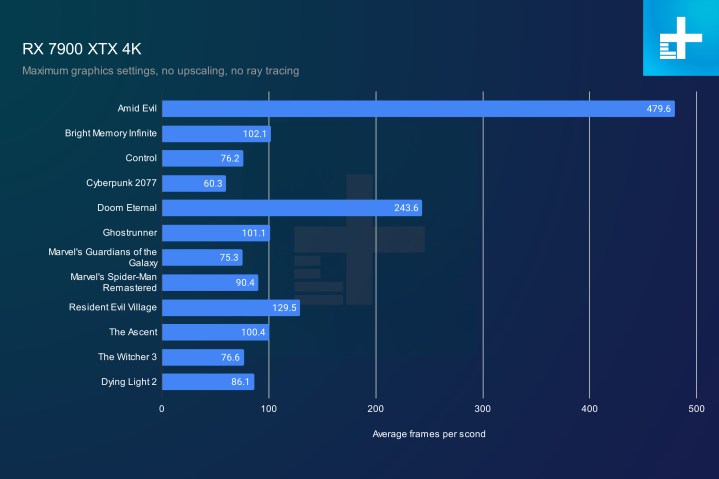
Without ray tracing, the RX 7900 XTX can handle basically anything you can throw at it. Even in a game as demanding as Cyberpunk 2077, you’re looking at above 60 frames per second (fps). In a lot of games, you’re looking at above 100 fps, and that’s with maxed-out settings at native 4K.
Ray tracing changes that dynamic a lot. Overall, you can comfortably reach above 30 fps in most games with ray tracing turned on, with some titles like Doom Eternal and Resident Evil Village showing excellent frame rates. Other titles suffer, though.
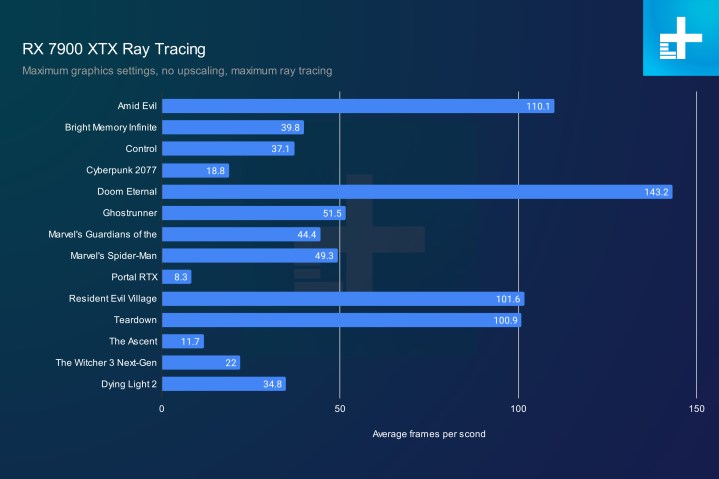
Cyberpunk 2077 produces less than 20 fps, which is unplayable, and Portal RTX couldn’t run anywhere near a playable frame rate. In fact, I had to turn Portal RTX down to Low settings, despite staying committed to Ultra settings for the other games. That’s a good illustration of why Portal RTX is the most demanding game I’ve tested.
Ray tracing is demanding, so I’m less concerned with the average frame rates here. The more pressing issue was the variety of software bugs I encountered. In particular, The Ascent showed massive stuttering even after rebooting the game several times. You can see in the chart below that on one run, the game fully locked up for several seconds. And I was using the latest AMD driver.
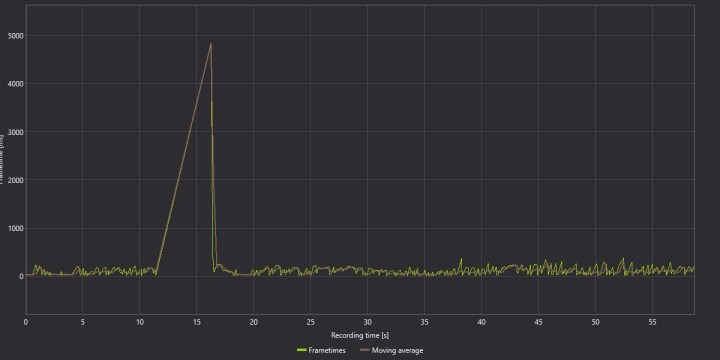
Similarly, The Witcher 3‘s next-gen update resulted in a couple of hard crashes during testing. Originally, I planned to include Warhammer 40,000 Darktide as part of my test suite, but that game showed a nasty bug where turning ray tracing on would remove all the textures from the game world.
Admittedly, The Witcher 3, Warhammer 40,000 Darktide, and The Ascent are all buggy games. I don’t want to place the blame strictly on AMD here. The vast majority of titles I tested worked just fine without any bugs, but these issues are still important to point out if you plan on buying an RX 7900 XTX.
Bring on the upscaling
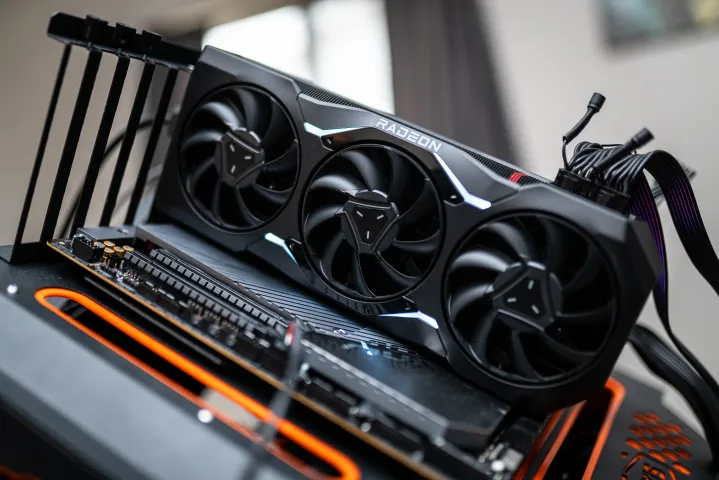
If you plan to turn on ray tracing, you should enable upscaling, as well. AMD provides its FidelityFX Super Resolution (FSR) feature for that, which is a bit mixed. FSR 2, which you’ll find in games like Marvel’s Spider-Man and Dying Light 2 is a treat. However, the much more common FSR 1 is lacking when it comes to image quality, despite impressive performance gains.
Let’s get performance out of the way first. FSR balances the scales a lot when you turn on ray tracing. The unplayable Cyberpunk 2077 jumps up to nearly 60 fps, and games like Ghostrunner climb to nearly 100 fps. The only outlier here is Portal RTX.

You can see a few games don’t benefit much from upscaling, though. Resident Evil Village was playable without upscaling, and it only sees a minor jump. The one that stings is Marvel’s Spider-Man. That game has a nasty CPU bottleneck, so the upscaling did very little to push the game above 60 fps.
You can also notice how many fewer games are in this chart compared to the ray tracing chart above. The games I omitted here don’t support FSR. Although FSR is available in a massive number of games — some 125+ based on AMD’s last count — Nvidia’s competing Deep Learning Super Sampling (DLSS) has broader support. Nvidia has also been very strategic in adding DLSS to games that support ray tracing. Short of Teardown, every game I tested supported DLSS, but only three-quarters supported FSR. And of those games, only four supported FSR 2.
As mentioned, FSR 1 and FSR 2 are very different. FSR 2 is available in around 45 games right now, but a long list of titles is stuck using FSR 1. That list includes popular titles like Cyberpunk 2077, Ghost Runner, and Marvel’s Guardians of the Galaxy, among others.
Raw ray tracing performance on the RX 7900 XTX is solid, but it’s the hit-or-miss support for FSR and, in particular, FSR 2, that puts a damper on ray tracing with AMD’s latest GPUs. There are definitely highlights like Dying Light 2, but they’re few and far between.
RX 7900 XTX ray tracing: worth it?
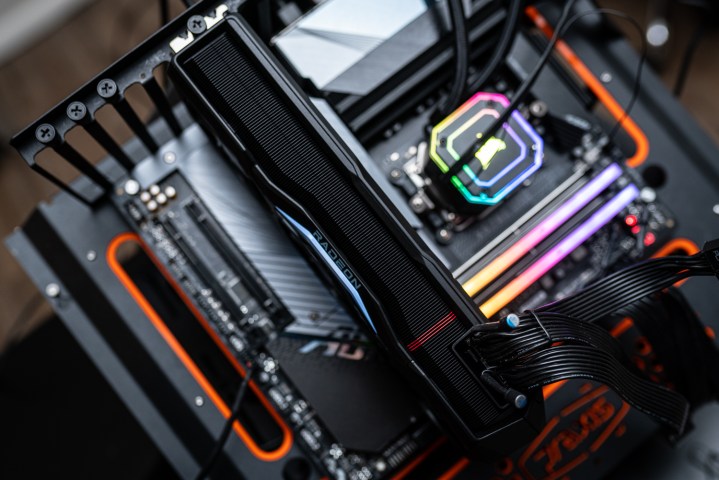
After running dozens of benchmarks, it’s hard to say that ray tracing is a selling point of the RX 7900 XTX. It’s a lot more possible than it was in the previous generation, and you can achieve solid performance with a few compromises in other areas. AMD is at least competing on the ray tracing front now.
The major problem is AMD’s ecosystem that surrounds ray tracing. Portal RTX is a prime example of that. Even with upscaling turned on at the lowest graphics preset, the RX 7900 XTX wasn’t able to crack 20 fps. Compare that to the RTX 4080. Due to the unique frame generation capabilities of DLSS 3, that card can reach nearly 90 fps with all of the settings maxed out. Most of that extra performance comes on the back of Nvidia’s software ecosystem. In raw performance, the RX 7900 XTX and RTX 4080 are nearly identical, showcasing how important features like DLSS 3 are.
That doesn’t mean the RX 7900 XTX is down and out. In fact, in the most demanding games I tested, ray tracing had the smallest impact. Cyberpunk 2077 and The Witcher 3 show a slight boost to depth, but I really noticed the effects of ray tracing in Dying Light 2, Doom Eternal, and Resident Evil Village — and the RX 7900 XTX performed excellently in all of those games.


